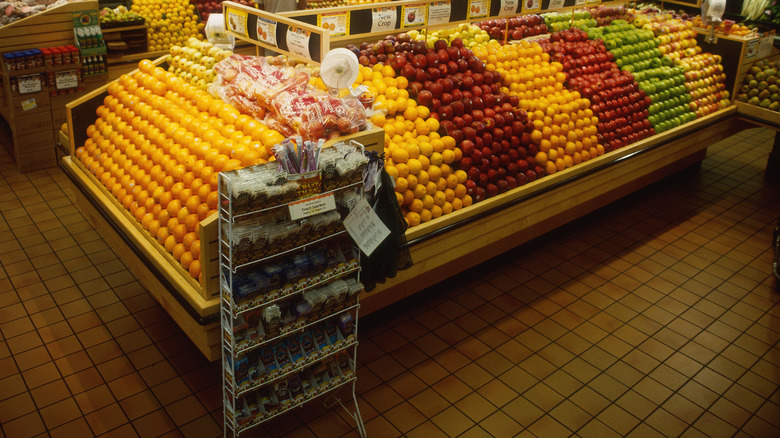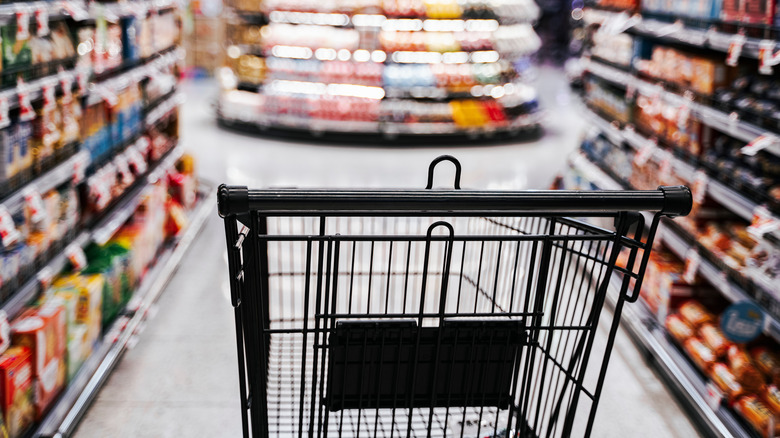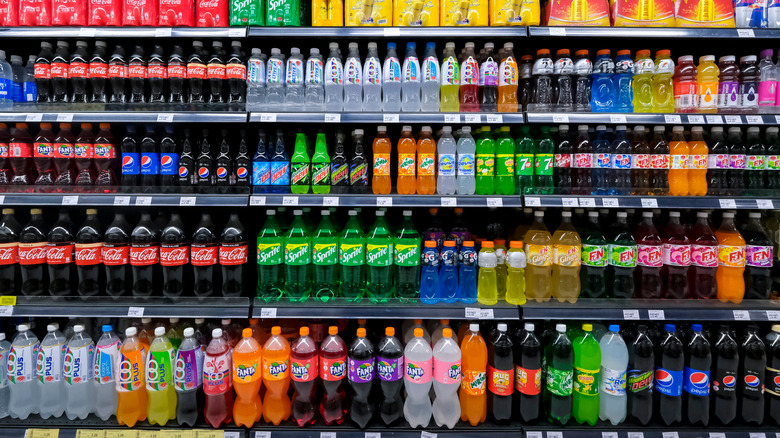The Secret Way Grocery Store Flooring Makes You Lose Track Of Time
We may receive a commission on purchases made from links.
You probably already know you shouldn't go to a grocery store on an empty stomach because you'll be more apt to buy foods you don't need — that's basic psychology. According to Habits of Health, to help you stick to a diet or ensure you don't waste money at a supermarket you should have a full belly when hitting the food store. But have you ever gone to a grocery store for a quick trip and found that you spent over an hour walking the aisles, without even realizing the time? It's happened to many people, and not only at Target. In fact, it's a part of how grocery stores are designed.
Yes, grocery stores are built and designed to make you spend more time in them so that you spend more money. The grocery companies have many clever ways of doing this, from not having windows to ensuring no clocks are displayed, per Reader's Digest. There is also strategic marketing to get your attention, even when you may be zoning out. Everything about a grocery store, right down to the floor, is designed to make you spend more money.
Grocery stores are designed to make you spend
Wait — how does the flooring in a supermarket make you spend more money? According to Mental Floss, grocery stores often use small floor tiles, which create a rhythmic sound of the shopping cart's wheels going over them. This makes it sound like your cart is going faster than it is, so you slow down, which means you spend more time in the store. And time is money, isn't it?
If you think that's sneaky, there are other things your supermarket doesn't want you to know. For example, the store is laid out in a way to make you have to walk through them to get to the most sought out items, Mental Floss reports. Milk, eggs, butter, and bread are often at the back of the store, which means if you are running in to get one of those kitchen staples, you'll be going through the whole store, and right by a lot of other merchandise, to get to the things you need. This means you'll most likely stop — as you're walking at a slower pace — to grab some items you probably don't need.
Small splurges add up
According to AARP, another way grocery stores entice you to buy more is by offering free samples. This works in two ways. First, those samples often have a nice smell, which makes you hungry and interested in tasting the food you are smelling. Once you try it, you are more likely to want it. Stores like Costco share free samples a lot, which helps to increase sales.
Another interesting money-grabbing trick stores use is placing cold drinks at the front of the store, AARP says. After you have just spent far more time than you planned to in the store, those drinks begin to look really tasty. They're also convenient because the cold case that houses them is near the cash register. While you may not see these sodas as a big splurge, when you consider that one single-serve soda can cost more than a 2-liter, (per Walmart), it adds up quickly.


